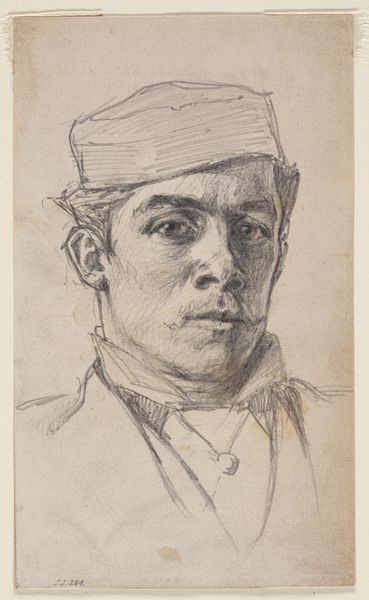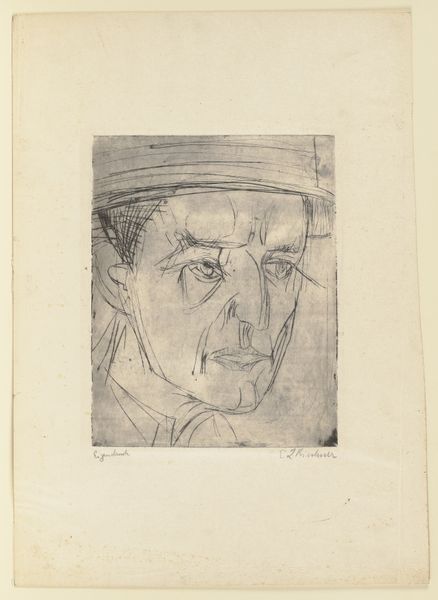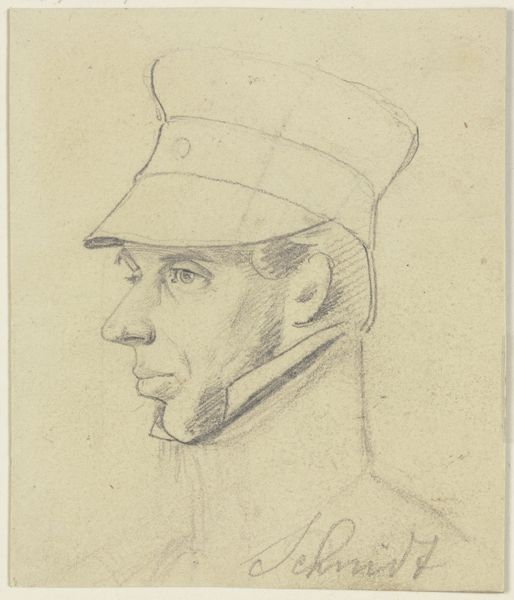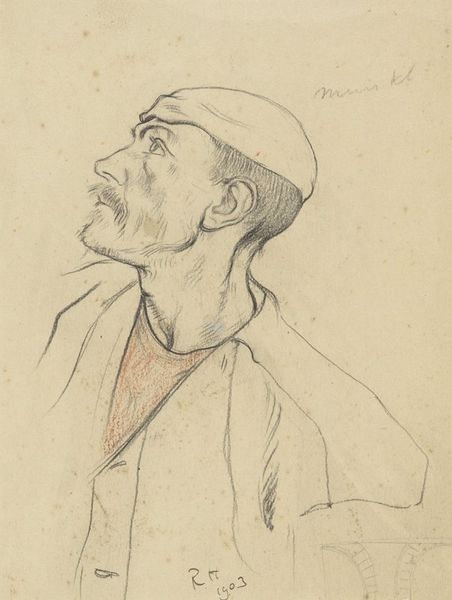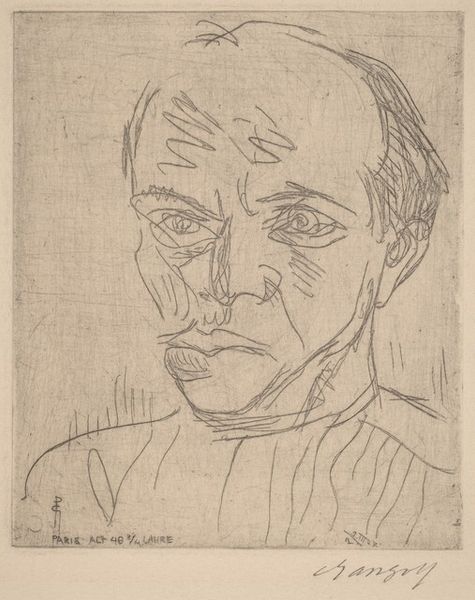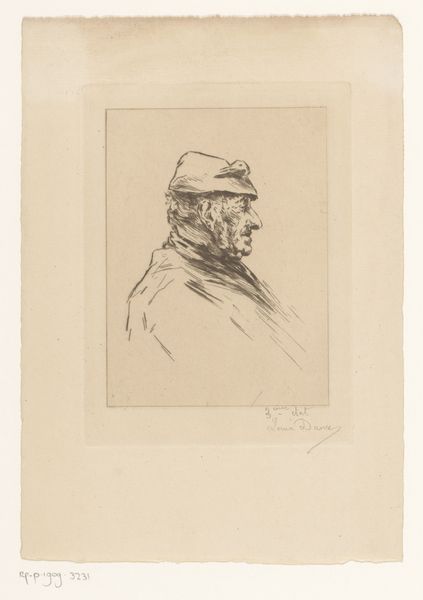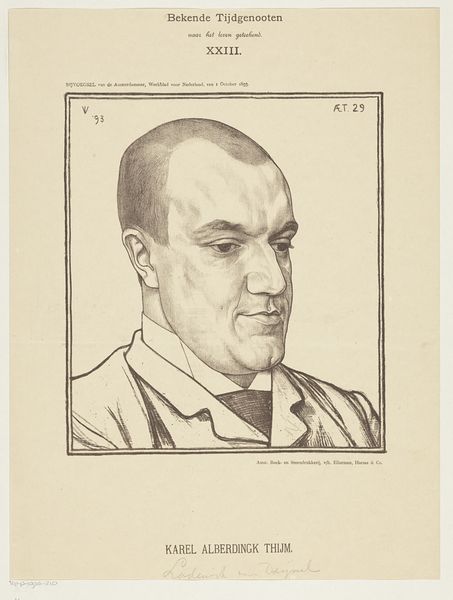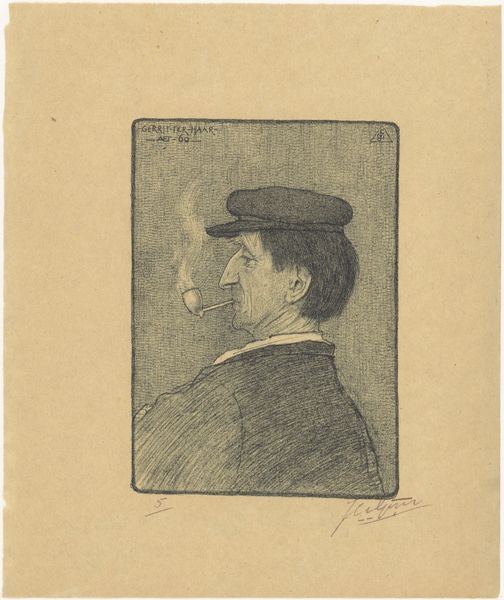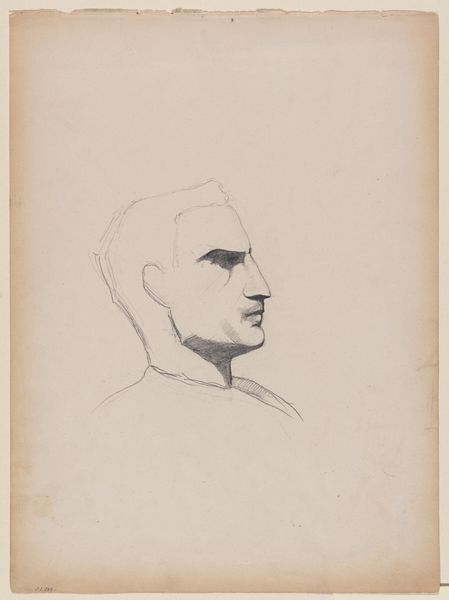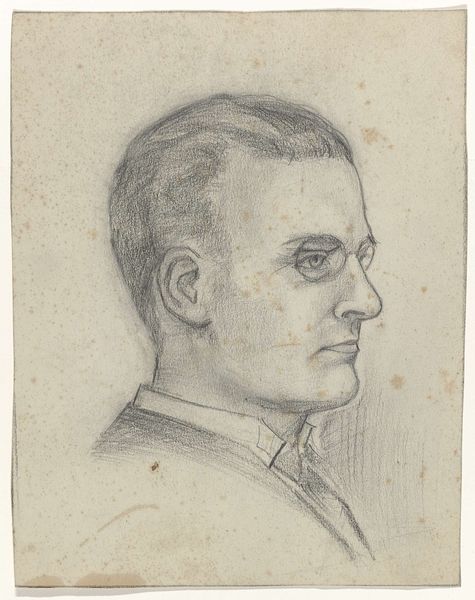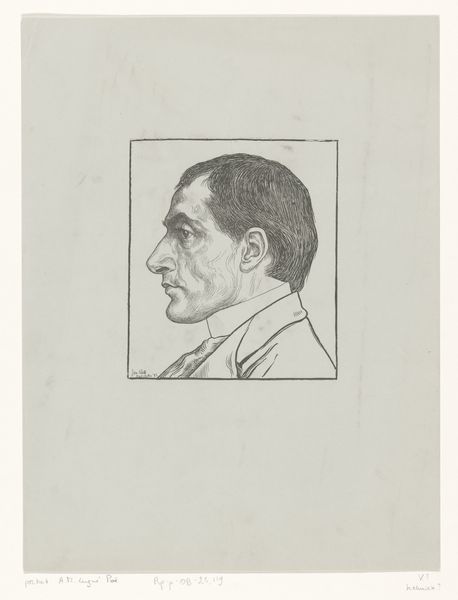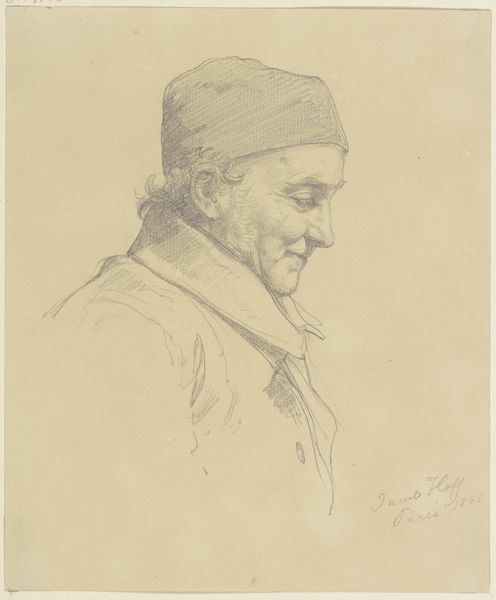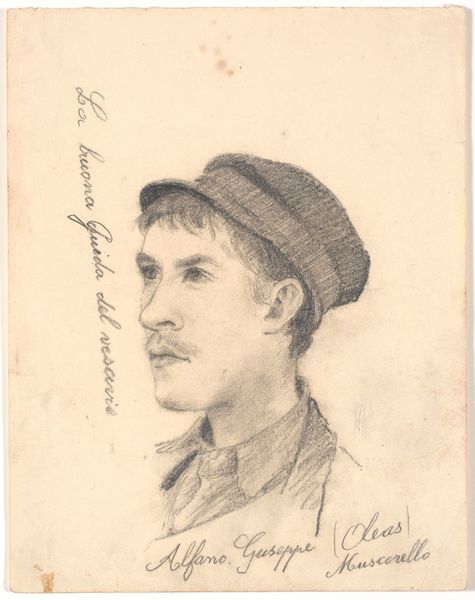
drawing, pencil
#
portrait
#
drawing
#
pencil drawing
#
pencil
#
portrait drawing
#
academic-art
#
realism
Dimensions: height 429 mm, width 323 mm
Copyright: Rijks Museum: Open Domain
Editor: Here we have Jan Veth’s “Portret van Adrianus Ravestein,” created in 1896 using pencil. The cross-hatching gives the whole piece a wonderful tactile quality, it almost feels like fabric. How do you read this portrait? Curator: What strikes me is the labor implied by the sitter’s dress and cap. Look at the very *economy* of line Veth employs. The rapid strokes aren't about idealization, but a brisk recording of someone likely accustomed to physical work. Editor: That’s a great point. You don’t see a lot of portraits from this time that depict someone who is working class. Curator: Exactly! Consider the accessibility of pencil as a medium versus oil paints, commonly used at that time. It’s a decidedly democratic choice of materials. How might this inform our understanding of Veth’s intent? Was he aiming to elevate the working class subject? Editor: Possibly, although his realistic style makes it hard to say definitively. I guess the question is, was it simply about the material practicality and cost effectiveness of pencils versus other media like paint or was it something deeper? Curator: Indeed. Even the choice of paper, its texture and availability, play a crucial role in the artwork’s overall effect and meaning. By focusing on such materiality, we can appreciate a dimension of this piece beyond mere representation. The subject of working class or otherwise, it gives this portrait its inherent value. Editor: I see that now! Considering the social and material circumstances really adds another layer. Thanks for the insight. Curator: It's been a pleasure.
Comments
No comments
Be the first to comment and join the conversation on the ultimate creative platform.
